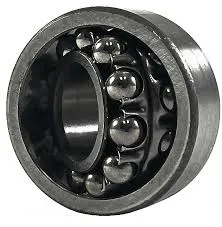
Nov . 12, 2024 09:30 Back to list
cylindrical roller bearing nu type
The NU Type Cylindrical Roller Bearing An Overview
Cylindrical roller bearings are critical components in various mechanical systems, providing support for radial loads while allowing limited axial movement. Among the diverse types of cylindrical roller bearings, the NU type stands out due to its unique design and versatility. This article explores the characteristics, applications, advantages, and maintenance of NU type cylindrical roller bearings.
Design and Characteristics
The NU type cylindrical roller bearing consists of an inner ring, an outer ring, and a series of cylindrical rollers. One of the defining features of the NU type is that its inner ring is designed as a two-sided structure that does not have an integral flange on either side. The outer ring, however, possesses flanges on both ends. This configuration allows the inner ring to move axially relative to the outer ring, making it particularly suitable for applications where axial movement is needed.
The rollers in NU type bearings are typically designed to minimize surface contact, allowing for a larger contact area and reduced stress concentration. This design results in lower friction and enhanced load-carrying capacity. Additionally, NU type bearings often utilize materials such as high-carbon chrome steel or stainless steel, providing durability and resistance to wear.
Applications
NU type cylindrical roller bearings are widely used across various industries due to their adaptability and performance. Common applications include
1. Electric Motors These bearings are integral in the design of electric motors, where they can support high-speed operation and accommodate thermal expansion.
2. Pumps In pumping systems, NU type bearings facilitate the rotation of impellers while managing radial loads efficiently.
3. Gearboxes The inherent design that facilitates axial movement makes NU type bearings suitable for gearboxes, where they can accommodate displacement caused by gear loading.
4. Industrial Machinery From conveyors to crushing machines, NU type bearings are found in numerous industrial applications, providing reliable support for rotating shafts.
5. Automotive Applications These bearings are often utilized in various automotive components, including transmissions and drivetrain systems, where they contribute to the smooth operation of moving parts.
Advantages
The NU type cylindrical roller bearings offer several advantages
cylindrical roller bearing nu type

- High Load Capacity Their design enables them to carry heavy radial loads, making them suitable for demanding applications
.- Low Friction The rolling mechanism minimizes friction, leading to improved energy efficiency and extended service life.
- Axial Movement Accommodation The absence of flanges on the inner ring allows for axial displacement, providing flexibility in applications with moving parts.
- Durability and Reliability High-quality materials and design contribute to the durability and reliability of NU type bearings, reducing maintenance needs.
Maintenance
Proper maintenance is crucial to ensure the longevity and optimal performance of NU type cylindrical roller bearings. Here are some maintenance tips
1. Regular Inspection Routine visual checks for wear, corrosion, and misalignment can help identify issues early.
2. Lubrication Adequate lubrication is essential for reducing friction and wear. Ensure that the bearings are appropriately lubricated with high-quality grease or oil as per manufacturer recommendations.
3. Temperature Monitoring Keeping an eye on operating temperatures can help prevent overheating, which can lead to premature bearing failure.
4. Alignment Checks Ensuring proper alignment of shafts and components can significantly enhance the lifespan of the bearings.
5. Load Monitoring Avoid exceeding the specified load limits to prevent excessive strain on the bearings.
Conclusion
NU type cylindrical roller bearings are vital in various industrial and automotive applications, providing reliable support for radial loads with the flexibility of axial movement. Their design, coupled with numerous advantages, makes them a preferred choice for engineers seeking durable and efficient bearing solutions. Understanding proper maintenance practices can further enhance their performance and lifespan, thus ensuring the reliability of the applications where they are utilized.
Latest news
-
Premium Deep Groove Ball Bearings | High Speed & Reliability
NewsAug.29,2025
-
Durable Scaffolding Clamps - Secure & Reliable Tube Connectors
NewsAug.28,2025
-
Common Failures in Thrust Ball Bearings and Solutions
NewsAug.22,2025
-
How Tapered Roller Bearings Can Take Shock Loads
NewsAug.22,2025
-
Angular Bearings in High-Precision Spindles
NewsAug.22,2025
-
The Impact of Misalignment on Cylindrical Roller Bearing Performance
NewsAug.22,2025
